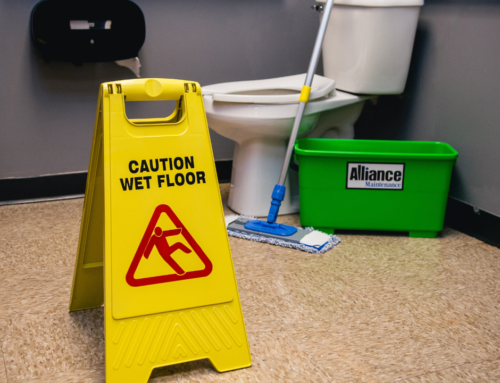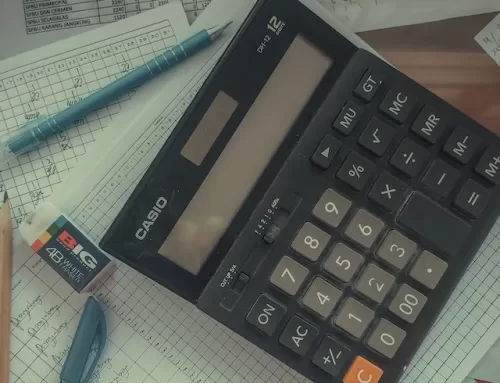In our previous post, we laid out some basic facts and answered common questions about robotic floor cleaners. We also detailed some of their shortcomings. Today we want to tackle what is probably the most pressing question: are industrial robotic floor cleaners worth the cost?
The short answer (again)
Robotic cleaners may be worth the cost if you are cleaning on a large-enough scale. How large that scale needs to be will change with the cost of labor and machinery.
In our case study below, we found our own break-even point was close to 350,000 square feet of vacuuming in a single facility per month. Let’s take a closer look.
Case Study
One of our operators used a robotic vacuum cleaner for a large account in Oklahoma City. The facility had 16,000 square feet of carpet to vacuum. He found that the robot could do that on a single battery charge.
The simple calculation
The robotic vacuum freed up 2.25 hours of human labor per clean, and they cleaned this facility 5 times a week. Therefore, the amount of labor this freed up averaged out to 49 man-hours each month. The monthly lease for the vacuum cost the same as 35 man-hours.

The autonomous vacuum used by our operator in this case study
From the simplest financial calculation, using the robotic vacuum saved him the cost of 14 man-hours, or 25-30% on labor costs.
Not so simple
However, there are a few reasons why the calculation isn’t so simple:
- We need to account for the time required for a person to assist the robot. A human needed to start the machine, open all appropriate doors for it, and move it from floor to floor on the elevator. This time spent offsets the amount of labor freed up by the robot.
- The person who assisted the robot was usually a higher-level, longer-term (and higher-paid) employee so that robotics training didn’t need to happen repeatedly.
- The robot needed 3 hours to vacuum completely, which meant that there needed to be enough non-vacuuming work to fill that time while waiting on the robot to finish its work.
- The operator spent many hours in the first few weeks to get the robot fully set up. This wasn’t an ongoing expense, but it needs to be accounted for.
Counting the extra time by a high-level employee to assist the robotic vacuum, our operator’s savings by using the robot are probably closer to 7-12%, not 25-30%. Also factoring in the amount of time required to integrate the machine into the cleaning routine, it took 6-12 months to see a net benefit from using robotics.
Our analysis
If the machine could be set up more quickly, if the machine had been cheaper relative to his labor cost, if he had deployed it in a large single-story facility, or if he had vacuumed the account once more per week, then this would have been a more obvious win.
Even so, 7-12% savings is a significant enough number that he plans to include robotics in other large facilities.
Does it make sense for me?
Now we come to the key question: are industrial robotic cleaners worth the cost for me? In order to answer this, you need to know the following:
Your basic cost
- How many square feet do I need scrubbed or vacuumed?
- How many machines do I need to perform this clean in the time that I have (considering both the speed of the machine and its battery life/charging time)?
- How much is the lease for each machine, counting all taxes, fees, and subscriptions?
Your saved labor cost
- How many hours of human labor are freed up per clean?
- How many times per month will I perform this clean?
- What is the total value of the man-hours freed up each month, counting all employer-paid taxes and insurance?
If your saved labor cost isn’t significantly higher than your basic cost then stop here. Robotic cleaners probably don’t make sense for you right now. Otherwise, make sure to weigh any other positive or negative factors.
Other factors
- How much of my time will likely be needed to research, contract, and set up robotic cleaners?
- How does the cost of the consumable robotic supplies compare to what we would spend without robotics? E.g. scrub heads, squeegees, HEPA air filters, dust bags, etc.
- Do I have people available to take care of the robot’s regular needs, like opening doors for it, clearing its path, filling/changing its water tank, changing scrubbing pads, moving it up/down ramps or elevators, etc.?
- Is there a lot of complexity to the layout of the building that might cause the robot to work slowly or poorly?
- Do I have a plan for introducing robotics into our cleaning routine in a way that doesn’t make my employees feel like they are being replaced?
- Can the robotic cleaner add value by performing more floor care than I would have done without it?
- Are there any other costs or benefits I haven’t factored in yet?
As costs come down, robotic floor cleaners will start to be more and more common. We’re excited to see what other technological innovations there will be in the coming years!




